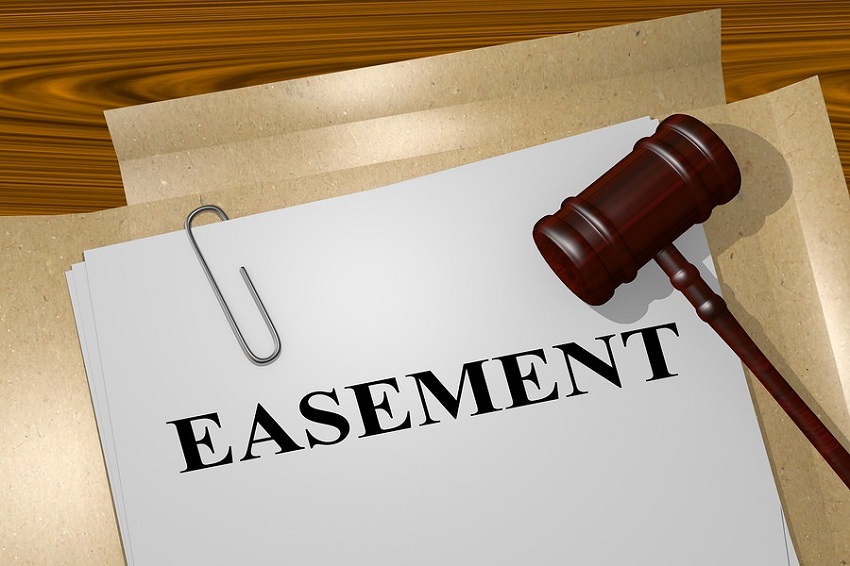Have you ever encountered a situation where an easement on your property has become inconvenient? Perhaps you wish to make changes or improvements hindered by an existing easement. In this article, we will explore the process of removing an easement from your property. We’ll provide a step-by-step guide highlighting the factors to consider and the legal complexities involved. So, let’s dive in and discover how to remove an easement from your property.
What is an Easement?
To understand the process of removing an easement, it’s important to first grasp the concept of it. An easement is a legal right granted to someone to use a portion of your property for a specific purpose. It allows the beneficiary, the person or entity benefiting from the easement, to access or use your land while you retain ownership.
Easements can be broadly categorized into two types: affirmative easements and negative easements. Affirmative easements grant someone the right to use your property for a specific purpose, such as accessing a neighboring property through your land. On the other hand, negative easements restrict certain activities on your property, such as preventing your neighbor from building a structure that obstructs your view.
Understanding the Need to Remove an Easement
Removing an easement becomes necessary when it hinders your property rights or restricts your ability to utilize your land fully. It could be due to a change in circumstances, a desire to alter your property, or simply the need for more privacy. Whatever the reason, removing an easement requires careful consideration and adherence to legal procedures.
Identifying the Process for Removing an Easement
Removing an easement involves several steps to ensure a successful outcome. Let’s walk through the process:
- Reviewing the Easement Agreement: Review the original easement agreement thoroughly to understand its terms and conditions. This will help you determine if there are any provisions for terminating or removing the easement.
- Negotiating with the Beneficiary: Engage openly and honestly with the easement beneficiary. Discuss your concerns and explore the possibility of agreeing to remove or modify the easement. This can often be the most straightforward and cost-effective approach.
- Obtaining Legal Assistance: If negotiations fail or the beneficiary is uncooperative, it may be necessary to seek legal assistance. Consult with an experienced real estate attorney who specializes in easement issues. They can guide you through the legal complexities and represent your interests effectively.
Factors Considered in Removing an Easement
Certain factors are crucial in determining the feasibility of removing an easement. Understanding these factors will help you build a stronger case. Consider the following:
- Change in Circumstances: If the original reason for granting the easement no longer exists or circumstances have significantly changed, it may be possible to argue for removing the easement.
- Mutual Agreement: If you can demonstrate that both parties agree to terminate the easement, it can strengthen your case for removal.
- Expired Easements: Some easements have a defined expiration date. If the easement agreement has expired, it may be easier to have it removed.
- Proving Non-Use or Abandonment: If the beneficiary has not utilized the easement for a significant period, you may be able to argue that the easement has been abandoned or is no longer in use.
- Adverse Possession: In rare cases, if you can establish adverse possession, which involves demonstrating continuous and exclusive use of the property over a certain period, you may have a legal basis to remove the easement.
Steps to Remove an Easement
Now that we’ve covered the factors. Let’s explore the steps involved in removing an easement:
- Researching Local Laws and Regulations: Familiarize yourself with the specific laws and regulations governing easements in your jurisdiction. This will help you understand the requirements and procedures for removing an easement.
- Gathering Evidence: Collect evidence to support your case for removing the easement. This may include photographs, surveys, property records, and any documentation showing non-use or abandonment of the easement.
- Preparing a Written Request: Draft a formal written request to the beneficiary, outlining your reasons for seeking the removal of the easement. Be clear, concise, and persuasive in presenting your arguments.
- Filing a Lawsuit, if Necessary: If negotiations and written requests fail, you may need to file a lawsuit to seek a court order for removing the easement. Consult your attorney to prepare the necessary legal documents and navigate the litigation process effectively.
Legal Challenges and Complexities
It’s important to recognize that removing an easement can present legal challenges and complexities. Here are a few potential hurdles you may encounter:
- Adverse Possession Claims: If the beneficiary argues adverse possession, they may claim to have acquired ownership rights over the portion of land covered by the easement. This can complicate the removal process and require additional legal strategies.
- Burden of Proof: As the party seeking the removal of the easement, the burden of proof rests on you. You must provide sufficient evidence and present a compelling case to convince the court of the necessity for removal.
- Public vs. Private Easements: Public easements, such as those granted for utility lines or public access, may be more challenging to remove due to public interest considerations. The removal process for public easements can involve additional government entities and regulations.
Seeking Professional Advice
Given the legal complexities involved in removing an easement, it’s highly recommended to seek professional advice. An experienced real estate attorney will provide guidance tailored to your specific situation, helping you navigate the process smoothly and protect your property rights.
Conclusion
Removing an easement from your property can be a complex and challenging endeavor. However, you can increase your chances of success by understanding the process, considering the relevant factors, and seeking professional assistance. Remember to approach the situation openly and explore negotiation options before resorting to legal action. You can regain full control over your property with determination and proper guidance.